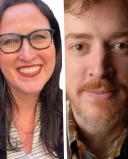Bias
The Bias of Experts
Even expert knowledge doesn’t prevent us from bias or from believing myths.
Posted June 29, 2021 Reviewed by Gary Drevitch
Key points
- We’re all biased. Even experts, from scientists to musicians, sometimes believe myths related to their own fields.
- An experiment showed that people were more biased toward ideas they were told they developed than ideas others had supposedly developed.
- Because of these biases, revolutionary scientific ideas sometimes take a while to catch on, even among experts.

Even experts make mistakes. Here’s an example: Despite the misinformation that we use just 10% of our brains, there is actually activity throughout our entire brains, even at rest. Science journalist Christian Jarrett recounted his experience writing an article rebutting the 10% myth in response to the film Lucy. In the film, drugs purportedly boost Scarlett Johansson’s character’s brain capacity from 10% to 100%, which allows her to “learn Chinese in an instant, beat up bad guys, and throw cars with her mind.” Jarrett’s debunking elicited a long email accusing him of “spreading such misinformed information to the public.” The angry reader? A Yale neuroscience graduate student! Even expert training had not inoculated this student to the 10% brain myth.
Even Experts Sometimes Believe Neuromyths
The Yale graduate student is not alone. Myths about the brain are sometimes called “neuromyths.” One study compared beliefs in neuromyths among the general public versus people who reported having taken “many” college-level courses in neuroscience. Neuroscience education did decrease the likelihood of believing in neuromyths, but perhaps not as much as we would hope: 36% of the general public believed that we only use 10% of our brain, whereas only 14% of the neuroscience-educated group did. Percentages of believers were even higher for other neuromyths. For example: Did you know that we don’t actually have “learning styles” in which we learn best? This is actually another neuromyth, but 93% of the general public in this study believed we do have learning styles, However, 78% of the neuroscience-educated group also did.
Another study assessed music teachers’ beliefs in myths related to music and education, such as that “music education improves one’s performance in calculus significantly.” Despite their training, 62.6% of the music educators believed this inaccurate statement.
Overall, the "experts" believed about 40% of neuromyths. The bottom line: Experts can be wrong in spite of their expertise. As Jarrett wrote elsewhere, “Thinking like a scientist is really hard, even for scientists.” Unfortunately, this is just as true for experts in any arena.
We Like Our Own Ideas Best
Beyond these general biases, all of us, including experts, have a built-in bias toward our own theories. In one clever experiment, research participants were told several theories about the inhabitants of a planet in a solar system called “Wugworld” (e.g., “Niffites have powerful teeth and dangerous spikes on their heads”). A third of them were told that “you” developed the theories, a third were told that someone named “Alex” developed the theories, and a third were not given any information about the source of the theories. Those who were told that “you” developed the theories rated them as more likely to be true, on average, than did those who were told that “Alex” developed them or those who were given no information about the source. Remember that these are completely made-up, nonsensical “facts,” and participants were randomly assigned to be told that either they, Alex, or no one had discovered them. It was enough to simply have a tenuous and invented connection to a theory. Imagine, then, the strength of the association for experts who actually develop their own theories through much toil and time.
Researchers’ preference for their own theories can lead them to reject ideas that conflict with their understanding of the world, sometimes slowing down the pace of scientific advancements. The now-renowned geneticist Barbara McClintock, for example, was mocked for her 1948 discovery that DNA sequences could change locations on the chromosome (see also Keller, 1983). She described the reaction of her fellow scientists as “puzzlement, even hostility” (McClintock, 1987). Eventually, other scientists supported her conclusion, and she won the Nobel Prize for Medicine in 1983, the first woman to win it solo.
The story of McClintock’s expert detractors is not atypical. Too often, experts are mired in their own theories, and reluctant to face conflicting theories, directly or indirectly. It’s hard for all of us to overcome our biases and tackle challengers head-on. This is just as true for experts as for the rest of us.
References
Düvel, N., Wolf, A., & Kopiez, R. (2017). Neuromyths in music education: Prevalence and predictors of misconceptions among teachers and students. Frontiers in Psychology, 8. https://doi.org/10.3389/fpsyg.2017.00629
Gregg, A. P., Mahadevan, N., & Sedikides, C. (2016): The SPOT effect: People spontaneously prefer their own theories, The Quarterly Journal of Experimental Psychology, 70(6), 996-1010. https://doi.org/10.1080/17470218.2015.1099162
Keller, E. F. (1983). A feeling for the organism: The life and work of Barbara McClintock. Freeman.
Macdonald, K., Germine, L., Anderson, A., Christodoulou, J., & McGrath, L. M. (2017). Dispelling the myth: Training in education or neuroscience decreases but does not eliminate beliefs in neuromyths. Frontiers in Psychology, 8, 1314. https://doi.org/10.3389/fpsyg.2017.01314
McClintock, Barbara. (1987). Moore, John A., ed., The discovery and characterization of transposable elements: The collected papers of Barbara McClintock. Routledge.


